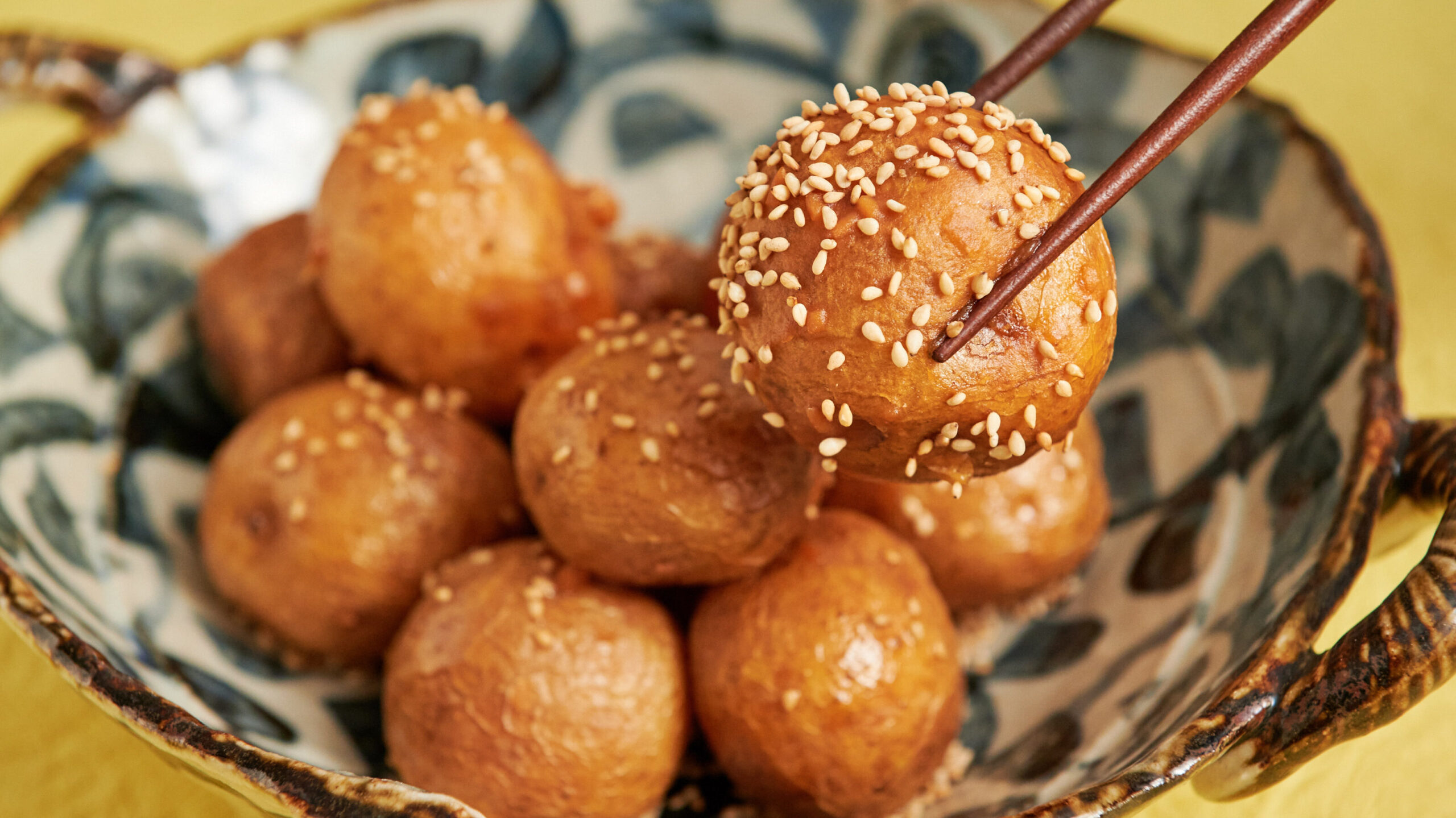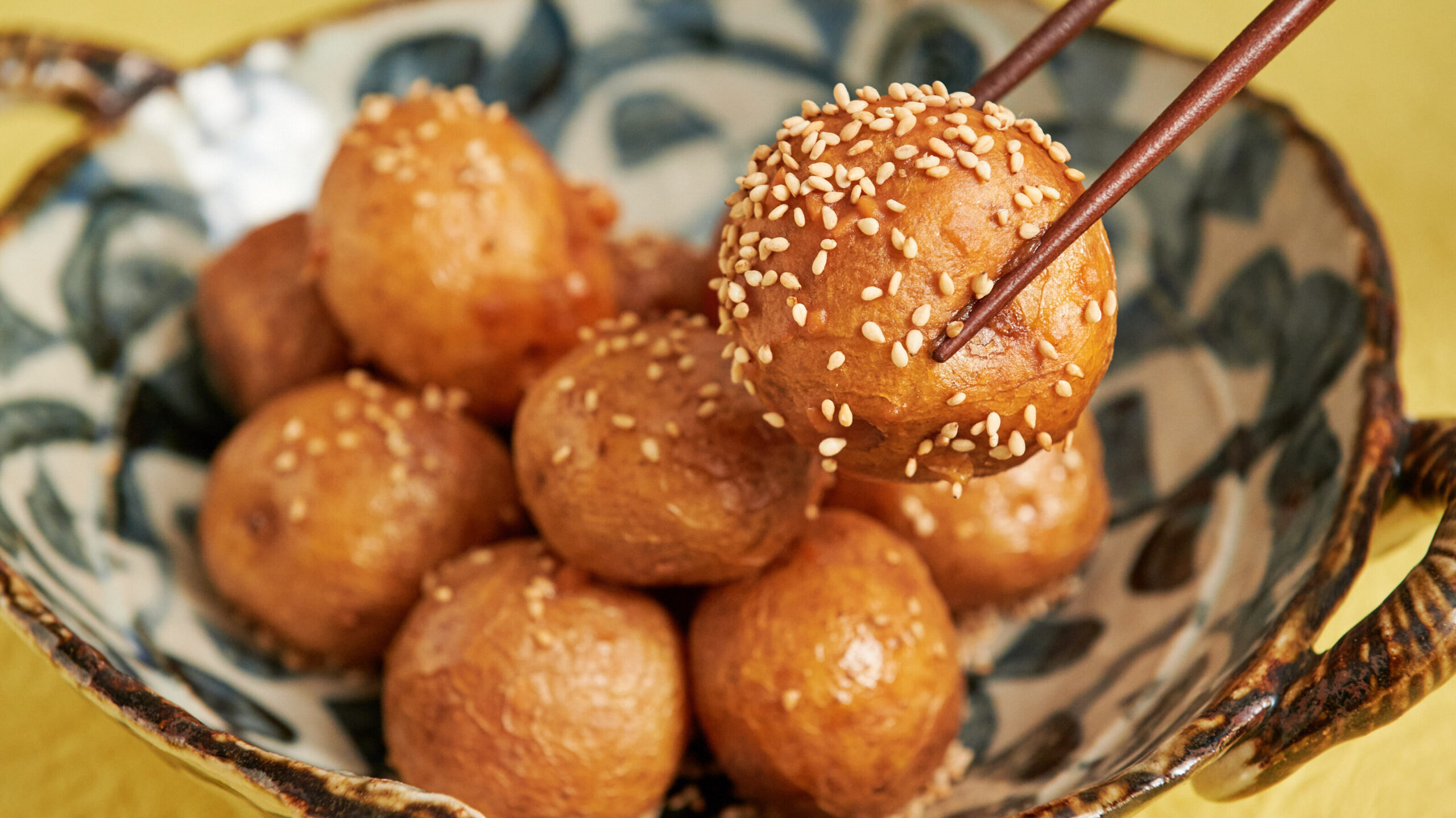
Alright, folks, let’s take a trip to Yamanashi and discover a rustic dish with a heartwarming story: Seida no Tamaji! It’s a simple yet satisfying dish of small potatoes simmered in a savory miso broth. This dish is all about making the most of what you’ve got and honoring the past. Let’s dig in!
Dish Name: Seida no Tamaji / せいだのたまじ
- Region / Location: Uenohara City, Yamanashi Prefecture.
- Primary Area of Tradition: Yuzuhara area of Uenohara City.
- Main Ingredients: Small potatoes, miso, sugar.
How It’s Eaten / Served
Seida no Tamaji is a home-style dish featuring small, skin-on potatoes cooked in a flavorful miso-based sauce. The potatoes are thoroughly washed, dried, and then deep-fried in oil over medium heat until the skin gets wrinkly. Then, they’re simmered in a pot with plenty of dashi broth. Once it boils, you reduce the heat to medium and add miso, sugar, and mirin (sweet rice wine). Simmer until the liquid reduces, and then lower the heat and cook until the sauce thickens. A sprinkle of sesame seeds makes a tasty finishing touch!
Cultural Background and Preservation
“Seida no Tamaji” is a local dish traditionally passed down in the Yuzuhara area of Uenohara City[cite: 1]. It’s essentially small, skin-on potatoes simmered in a miso-flavored sauce[cite: 1]. The name “Seida” has an interesting origin: Back in the late Edo period, a Kofu magistrate named Seidayu Nakai brought potatoes from Kyushu and distributed them to the villagers to grow, helping them survive a great famine[cite: 1]. In gratitude, the villagers started calling potatoes “Seidayu Imo” or “Seida Imo,” which eventually became “Seida”[cite: 1]. Seidayu Nakai is even enshrined as the “Potato Deity,” and there’s a monument dedicated to him at Ryusenji Temple in Uenohara City[cite: 1]. “Tamaji” simply refers to small potatoes[cite: 1]. So, the name “Seida no Tamaji” reflects the wisdom of the people who made sure even the smallest potatoes were used and enjoyed.
While you can enjoy it year-round, Seida no Tamaji is especially popular between March and July, when new potatoes with their thin skins are in season[cite: 1].
You can find Seida no Tamaji in various places: it’s made in homes, sold in supermarket delis and souvenir shops, and served at “Furusato Chojukan,” a local exchange center where you can experience regional cuisine[cite: 1]. Some schools even serve it in their school lunches, explaining the origin of the name to the kids[cite: 1]. Furthermore, Yamanashi Prefecture has selected Seida no Tamaji as one of the “Special Selection of Yamanashi Food,” a group of 47 representative dishes chosen from 176 local foods that the prefecture is committed to preserving for future generations[cite: 1].
Additional information:
- Tamaji (たまじ): Means small potatoes.
- Seida (せいだ): Shortened name for Seidayu Nakai, who introduced potatoes to the area.
- Dashi (だし): Japanese soup stock.
- Mirin (みりん): Sweet rice wine used for cooking.
The information about regional cuisine featured on this website (Piggy's Grandma of Japan) is summarized and adapted from the Ministry of Agriculture, Forestry and Fisheries of Japan (MAFF) website, "Our Regional Cuisines"Additional commentary is provided based on the unique experiences and perspectives of the site's editors.
The copyright for the original content regarding regional cuisine belongs to the Ministry of Agriculture, Forestry and Fisheries of Japan.
The summaries and adaptations published on this site are intended for informational purposes only. Piggy's Grandma of Japan does not guarantee the accuracy or completeness of this information. For the most accurate and complete details, please refer to the original pages on the MAFF website.



